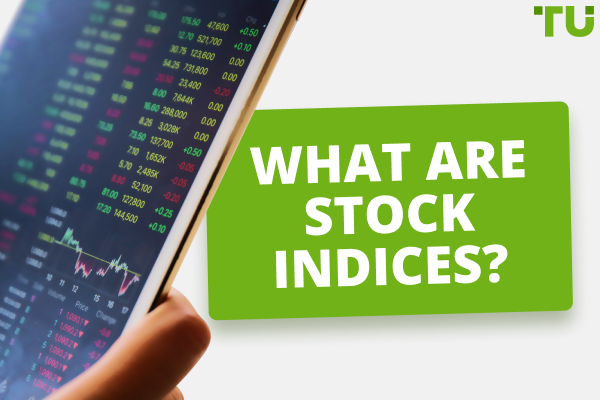Breakout trading strategies
Traders use various strategies for successful trading. Some of them even use several strategies at once, depending on their preferences and skills. There are, however, the most popular strategies that could be used both by professional traders and beginners. Breakout trading strategy is one of them. In this article, we will discuss how the breakout trading strategy works and how to use it.
What is Breakout trading?
The name of the breakout trading is quite simple and its name speaks for itself. A trader initiates a buy/sell trade, when a breakout occurs, i.e. when the price of an instrument moves above a strong resistance level or below a support level. After the breakout, the price, having received an additional impulse, should continue moving up or down respectively, and traders can use the trend to earn substantial profit.
Notably, it is possible to work in this strategy both in the direction of the existing trend and with its reversal and start of a new trend.
As a rule, a breakout of a strong level is preceded by a consolidation stage, when the bears try to break out the support level and the bulls – the resistance level, but none of them can succeed, and the price of an instrument moves within the formed range. Short-term movements beyond the range are possible.
Over time, price fluctuations may fade out next to the top or bottom edge of the range and that may precede the breakdown of the level. This activity causes the volume to rise to a level that is usually enough for the level breakout and continuation of the movement, trend reversal or development of correction.
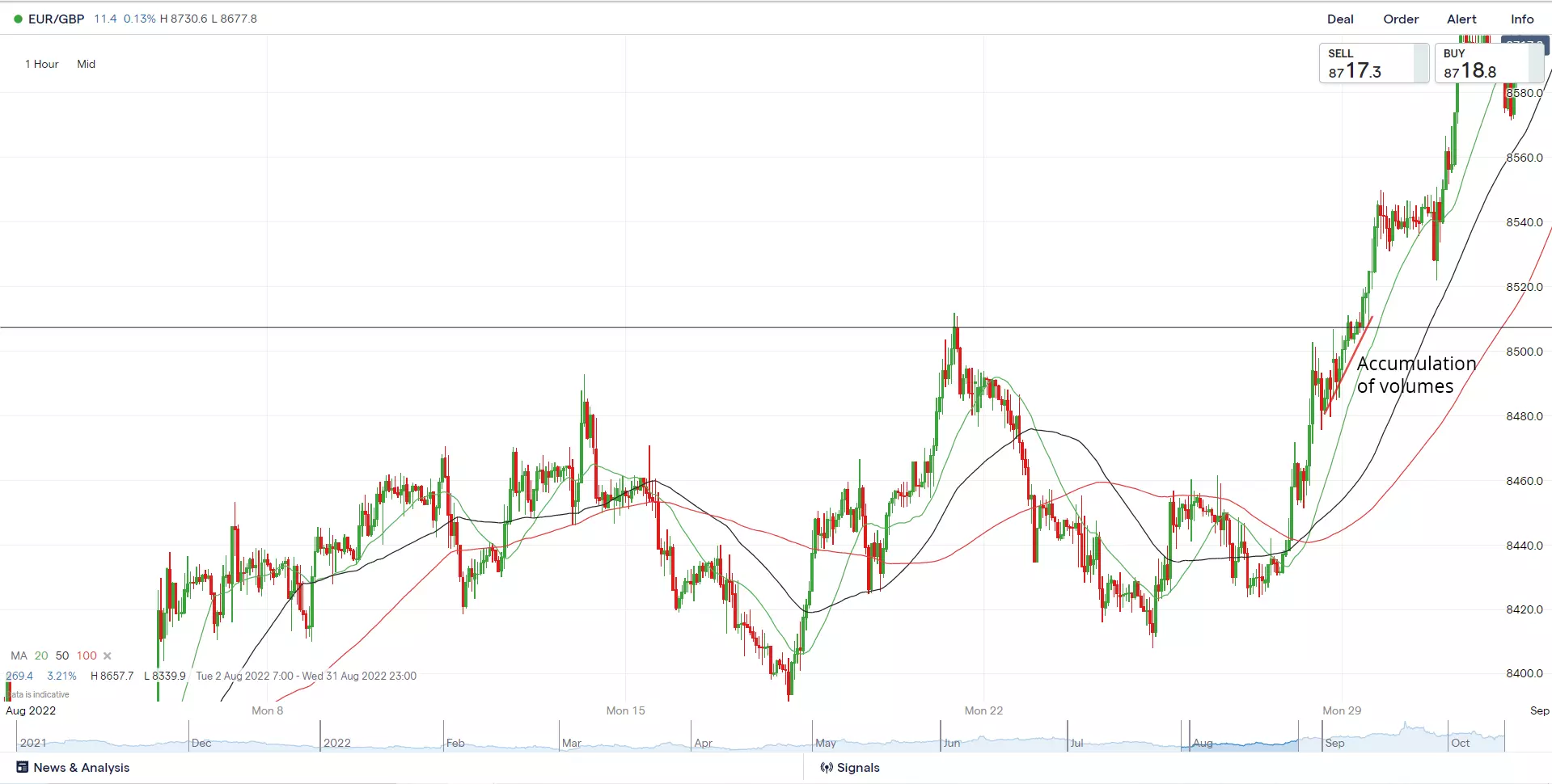
Accumulation of volumes
Once the volume accumulates, the price breaks the level, which is when the Stop-Loss orders of the opposite camp get triggered, and the price, having received an impulse, quickly moves in the direction a trader needs. As a result, having bought at the breakout of the resistance or sold at the breakout of the support, a trader follows the trend, and, according to the “a trend is your friend” statement, earns substantial profit. The period of consolidation is generally unpredictable; everything depends on the strength of the trend and the strength of the opposite side and can last minutes or weeks.
If the opposite camp of traders is relatively weak, consolidation won’t be long and the range may shift in the direction of the movement.
Short-term breakout trades could be effective to an extent. In their case, traders don’t plan to take a large number of points, which is why they can earn a profit even when the price exits the range even slightly. For these kinds of short-term trades, it is more effective to use trading robots. In that case, you don’t have to manually catch the breakout and the position closing level, because the robots do it for you.
All of this sounds good and optimistic. However, if everything had been as easy as described above, there would have been only one camp of traders – the camp of winners and that never happens in real life. In this situation, a false breakout could turn out to be a fly in ointment. Below, we will discuss it in more detail.
What is a False Breakout?
A false breakout, also sometimes called a failed breakout, is a situation when the price breaks a strong level, travels a small distance and then rallies back. As a result, a trader who bought/sold at the support/resistance breakout, i.e. at a very unprofitable price in this case, looks in horror at his seemingly 100% profitable position, while incurring a rather unpleasant loss. There are actually no pleasant losses, but this is not about it.
In case of a false breakout, there are several ways the events could unfold. The price could return to the range and continue to move within it; the price could return to the range and continue to move in the right direction, or it could return to the opposite side of the range, break it and develop a movement in the direction that is unprofitable for a trader.
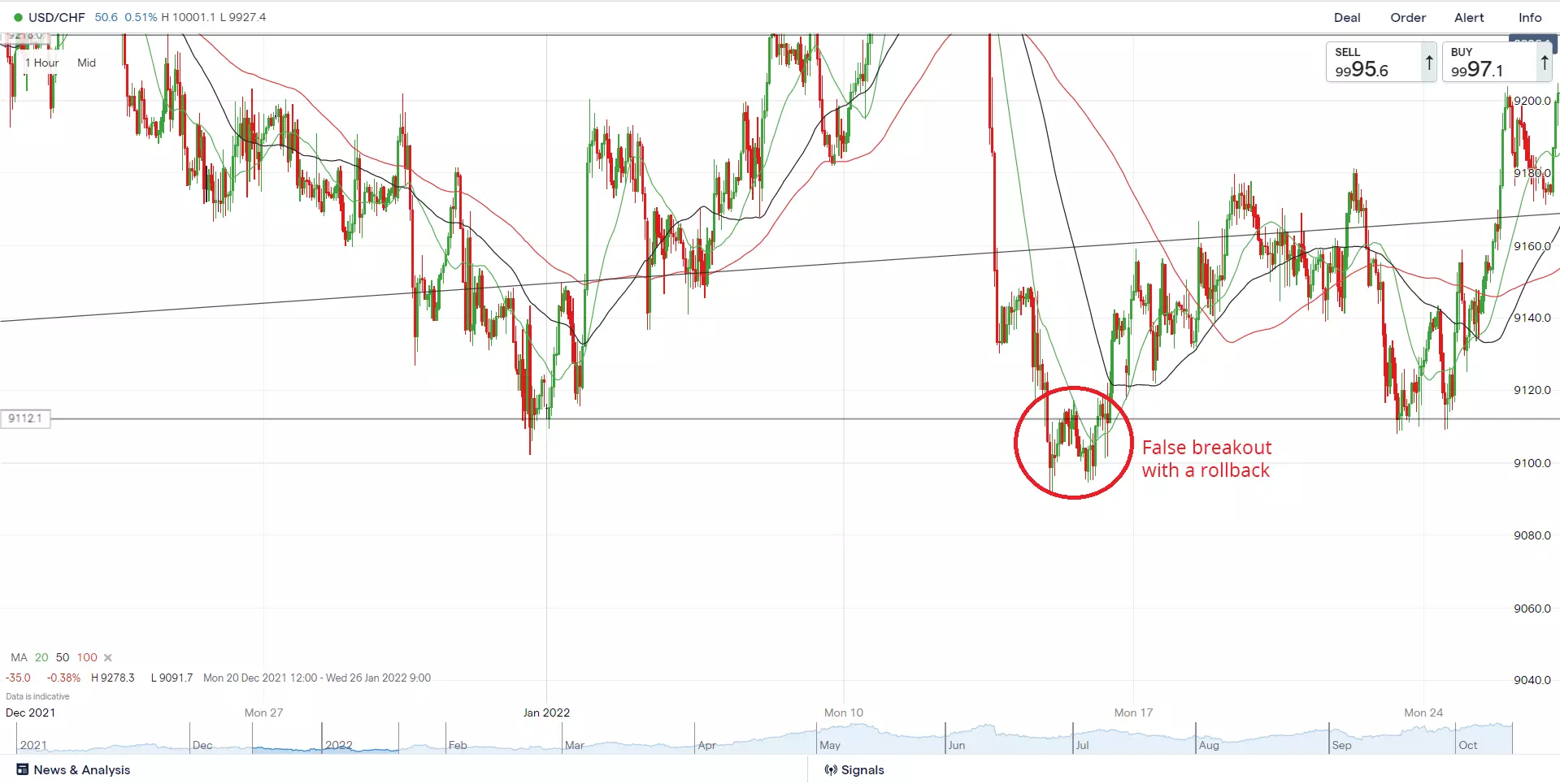
An example of a false breakout with a rollback
In the image above, you can see an example of a false breakout with a rollback, i.e. breakout of the level, a rollback to the breakout level, an attempt to continue downward movement and the price reversal and movement in the opposite direction.
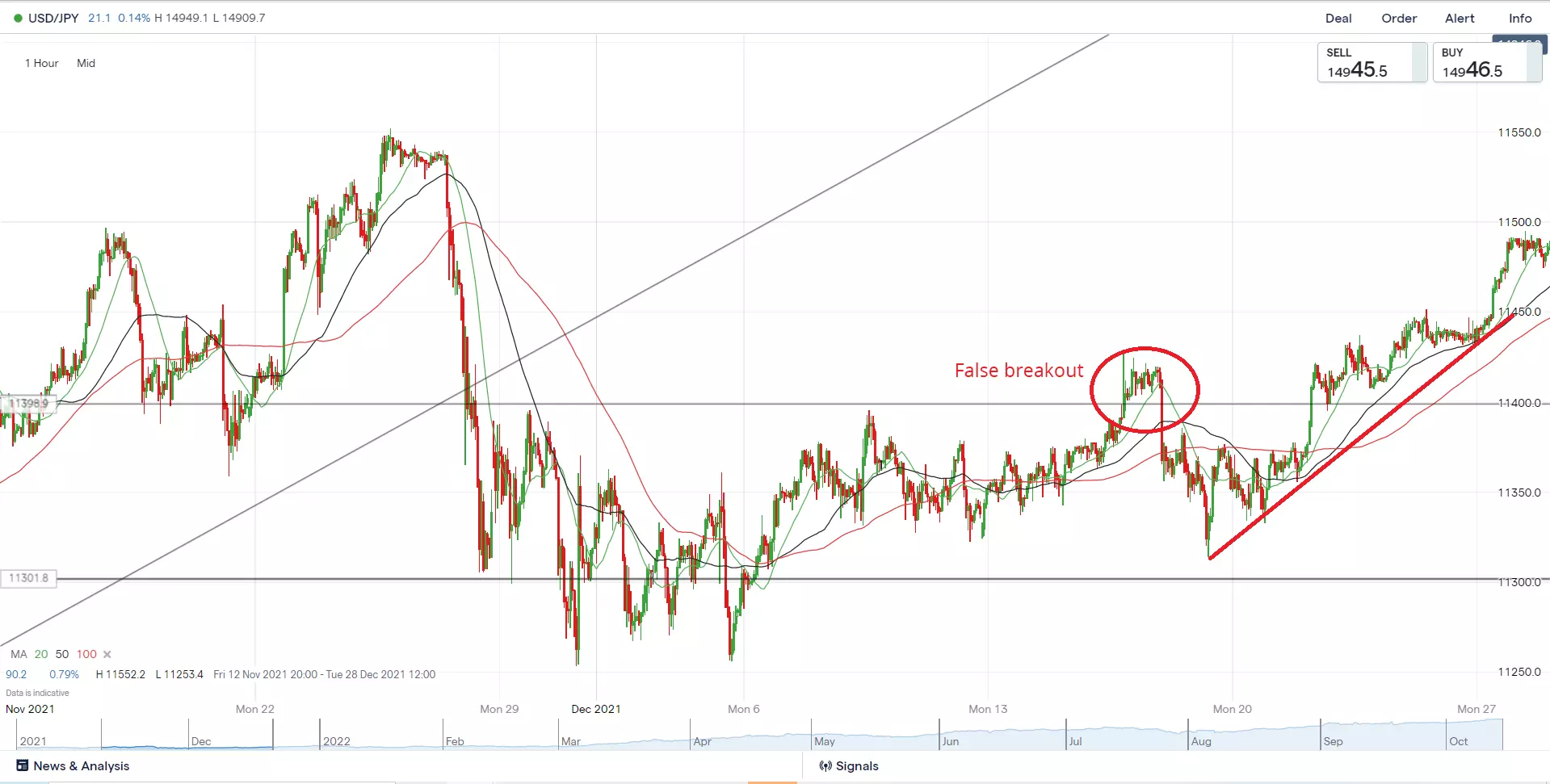
A false breakout of resistance
This example shows a false breakout of resistance, price reversal and its return to the range, and then moving upward, although at that point a trader has already incurred a loss. There are also psychological barriers: after the next breakout, a potential buy would have brought a good profit that would well cover the loss suffered by the trader earlier, but not every trader is brave enough to enter a position on the breakout of the same level.
Therefore, it is rather difficult to make a decision on how to exit from false breakout situations without losing face. In these cases, traders need to consider the loss that is acceptable for him/her. Ideally, a Stop-Loss order should be set below/above the breakout level, and in the worst case scenario – below/above the opposite side of the range.
Pros and cons of breakouts trading
In the view of the above, the benefits of the breakout trading strategy include a possibility of a big profit thanks to the impulse the price receives from the high volume of trading aiming for the breakout, and also Stop-Loss orders of traders trading either inside the range or hoping for the breakout of the opposite side.
The drawback of the breakout trading strategy is the risk of a false breakout, when you buy/sell an asset at an unfavorable price, which, in turn puts you in a difficult situation, when you need to make a strong-willed decision on how to exit the trade at a minimum loss.
How Does Support and Resistance Work in TradingBreakout strategy with the best R/R
Implementation of a breakout strategy with the best Risk/Reward ratio is possible if the price breaks a strong level after accumulating volumes near one or the other side of the consolidation volume.
As we’ve already mentioned, during the consolidation phase, price fluctuates within a narrower range below the resistance or over the support, and the protection order is used placed below the resistance/ over the support. This way, a trader may get a trade with a 1:3 R/R in the very least.
The price receives the strongest impulse when on the breakout of a long-term consolidation range. In other words, the longer the bears and bulls compete, the more traders take one or the other side, and the more Stop-Loss orders accumulate beyond the edges of the range, which serve as an additional fuel for the breakout upwards.
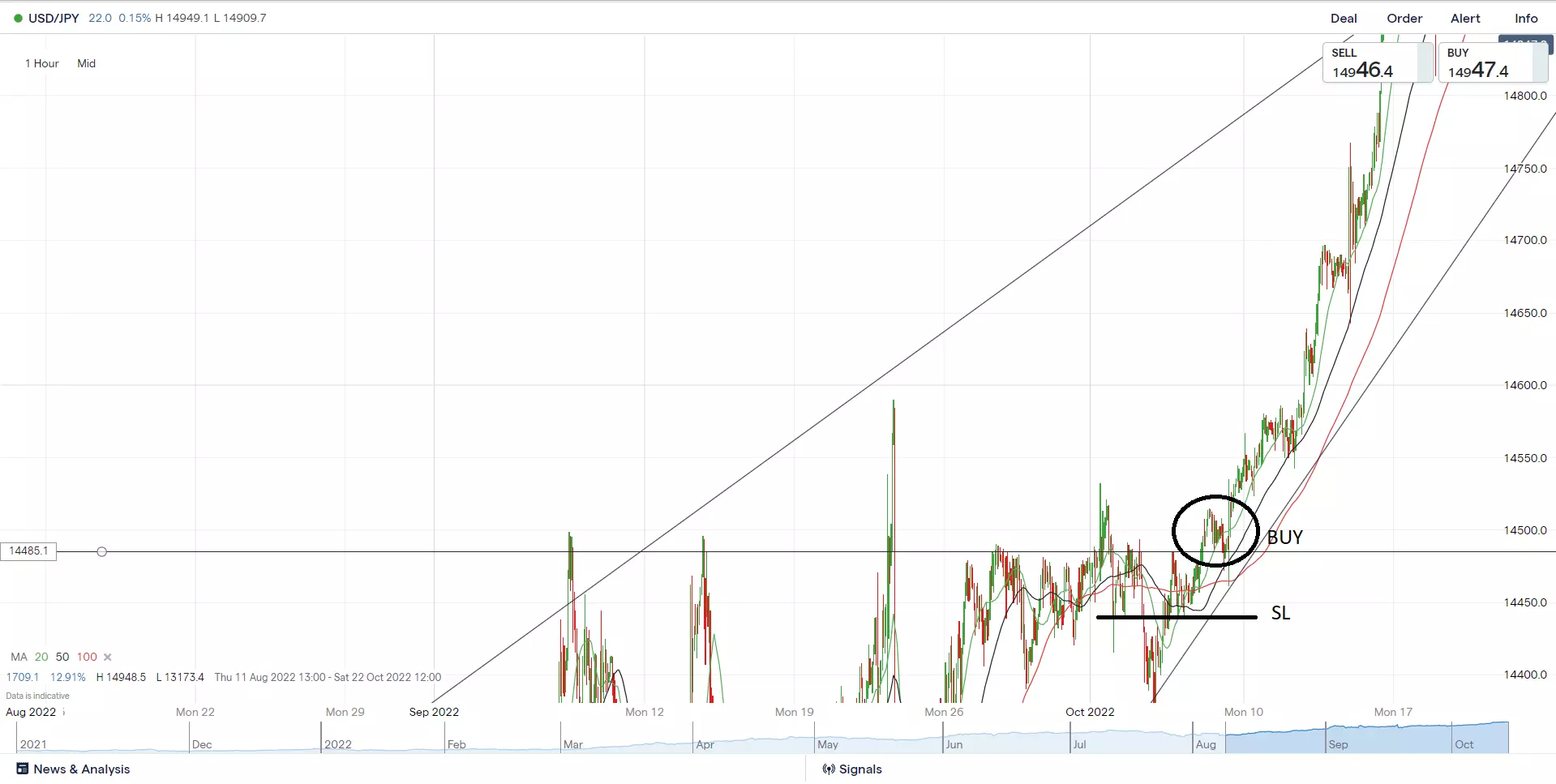
An example of a perfect trade
This example shows a perfect trade, where it was possible to buy on the rollback to the breakout level with a Stop-Loss order at around -50 points, while the long position could bring at least 150-200; that is, if the greed won and the trader rushed to close the position at this amount of profit.
A breakout trading strategy can also be used during the already existing upward or downward movement, i.e. enter the market in the direction of movement at the breakout of the current intermediate resistance level after a rollback (see the example below).
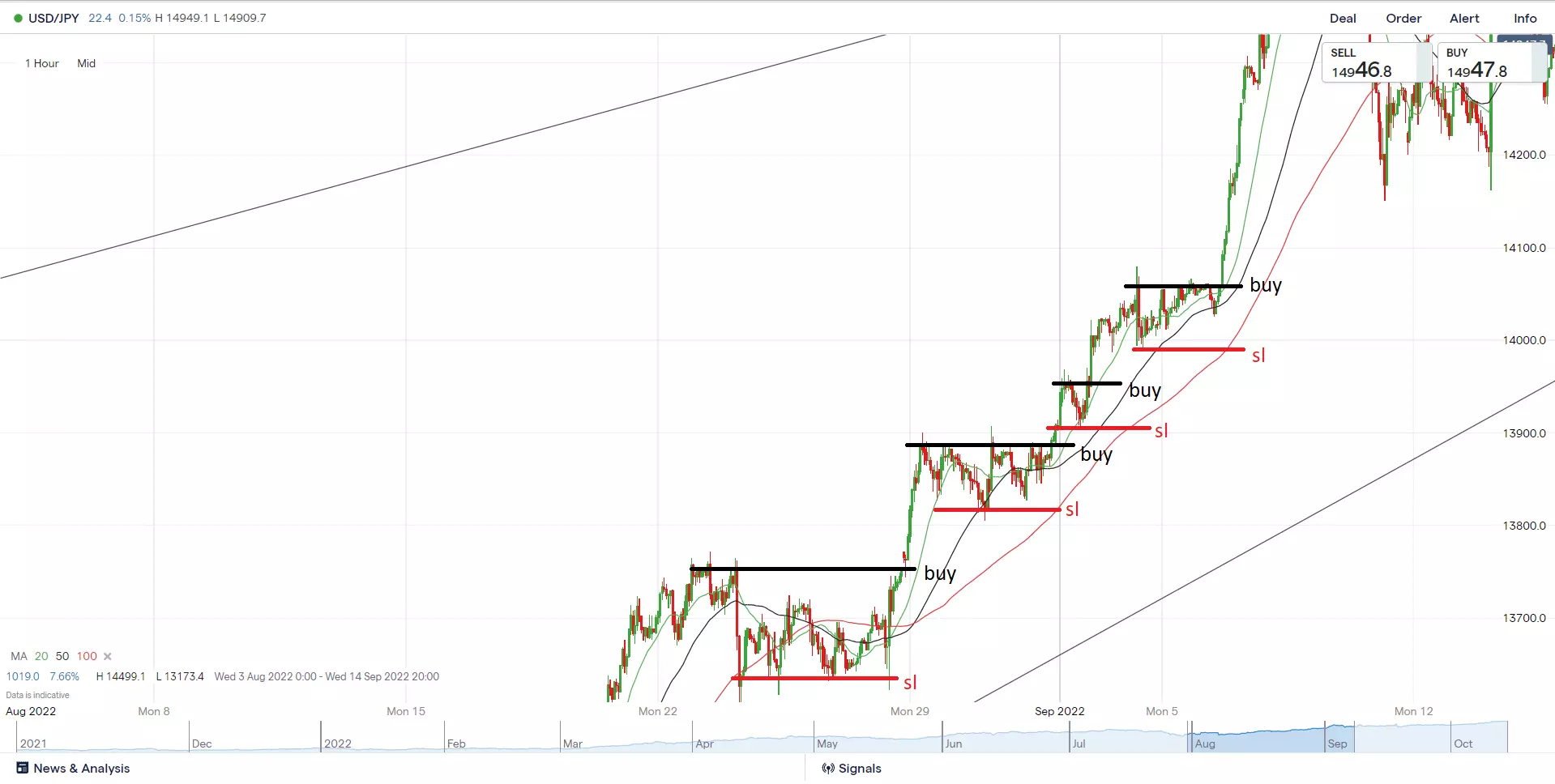
The breakout of the current intermediate resistance level after a rollback
On this movement, there was an excellent opportunity to enter the market on the trend at the breakouts of each intermediate resistance, with the Stop-Loss order set below each intermediate support. Of course in these cases, you can use Trailing Stop-Loss orders.
When should a short position be opened for the breakout?
In order to open a short position on the breakout of the support level in a classic situation, you need to wait for the price to break the level, roll back to that level and sell with a Stop-Loss above the previous extreme on this rollback. Unfortunately, these situations don’t always happen, and the price could start plunging rapidly without the rollbacks, provided that the breakout is not false.
In this case, the psychological factor comes in, as the trader no longer dares to enter a trade at an unfavorable price, as it seems at the time, and ends up missing a good movement that would provide good profit.
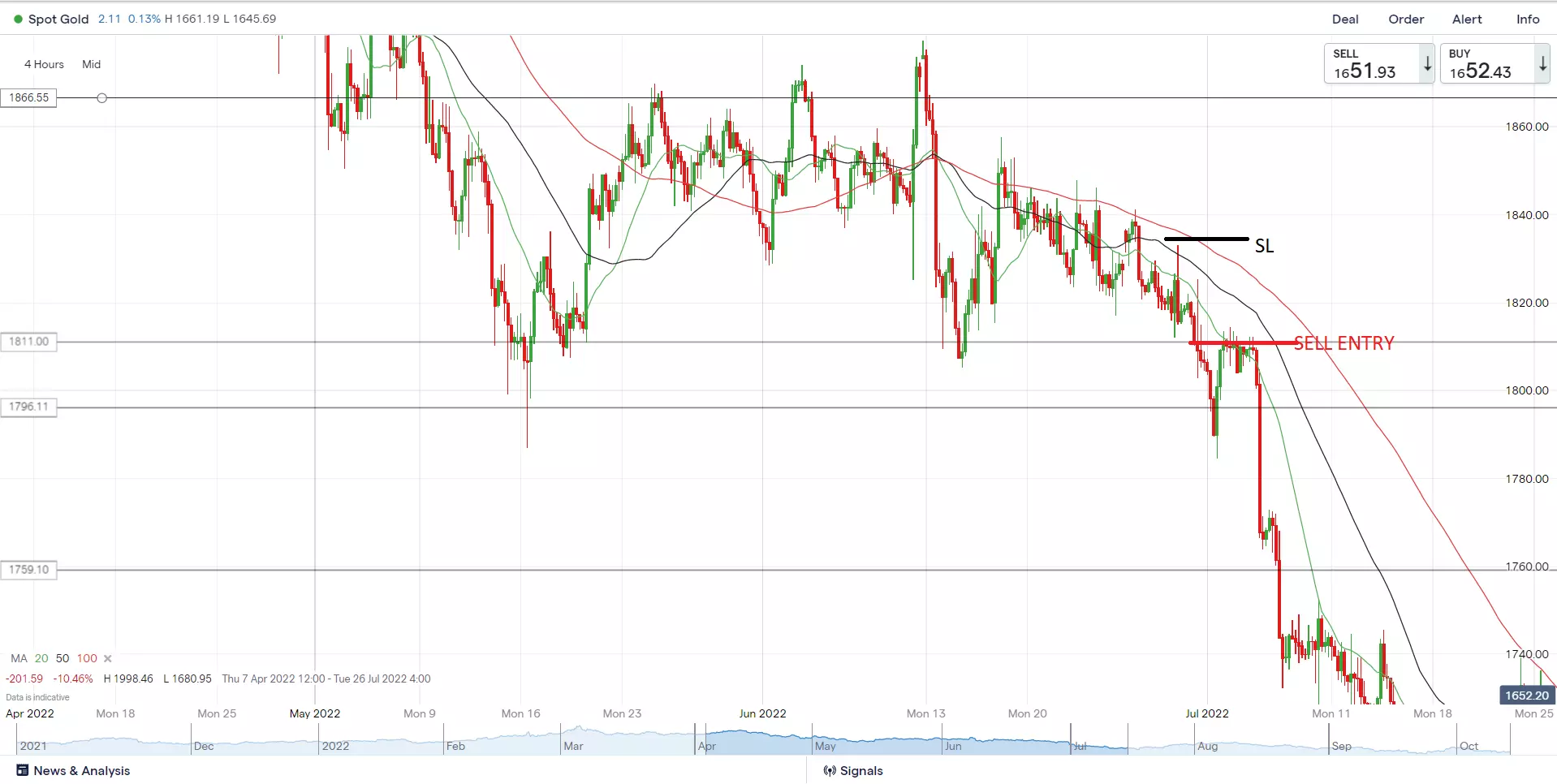
A classic breakout with a rollback
The example above shows a classic breakout with a rollback.
When should a long position be opened for the breakout?
Opening a long position on the breakout of the resistance is done similarly: the price breaks the top edge of the range, travels a small distance and then tests the broken level on the rollback, now as a support, and continues to grow. A long position is opened on the rollback with the Stop-Loss order below the previous low. Just as in the previous case, there may not be a rollback.
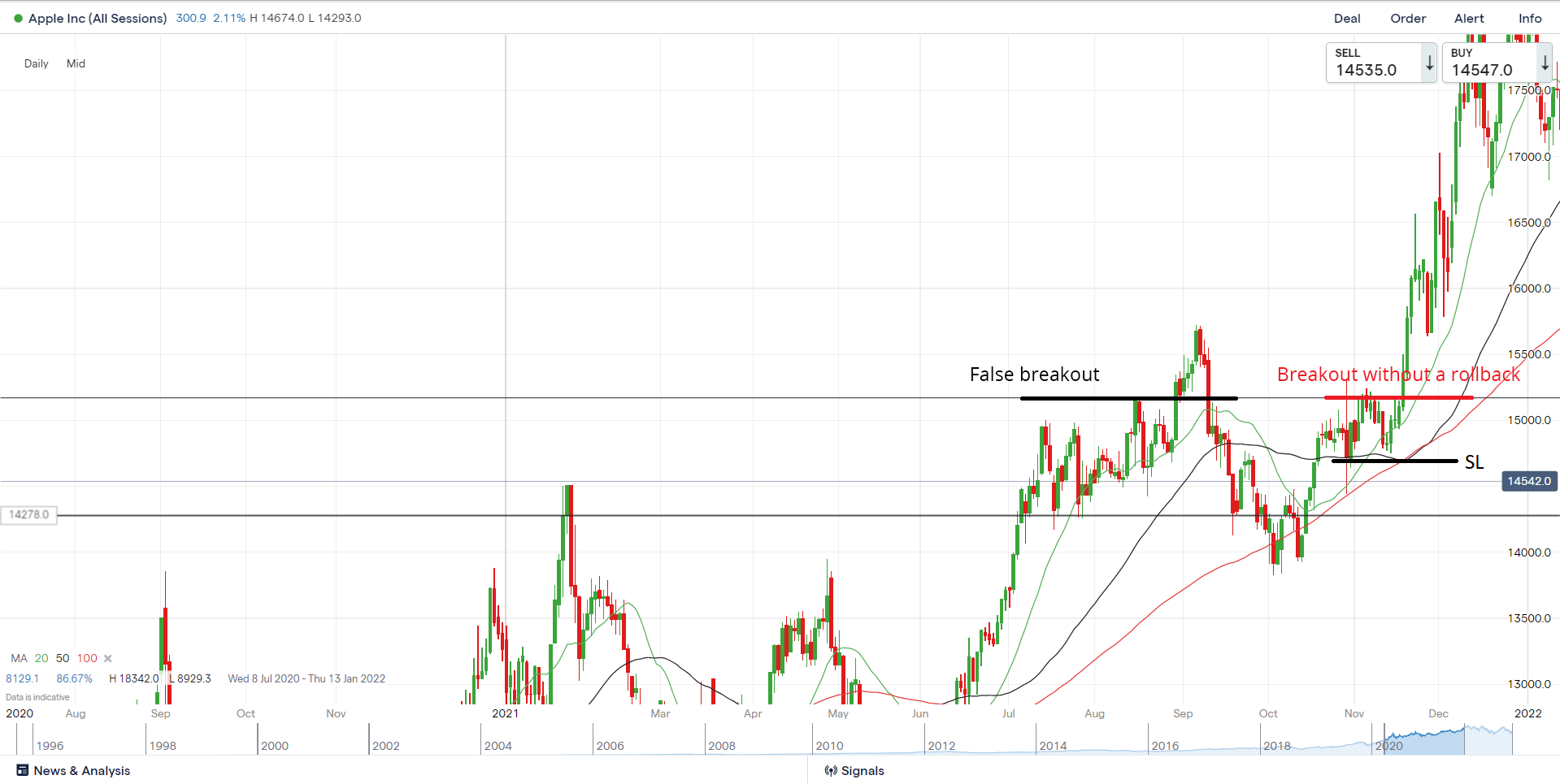
A false breakout and a breakout without a rollback
The example above shows a false breakout and a breakout without a rollback
In both cases, when the winning traders do not provide an opportunity to enter a trade on the rollback, all a trader can do is to make a decision to enter the market based on his/her risk management and greed.
Key mistakes of breakouts trading
Premature entry to the market and ignoring confirming signals are the main mistakes of breakouts trading.
An inexperienced trader often acts emotions, and, fearing to miss the seemingly “good” price, rushes to open a position once the price breaks a level. This often leads to trading false breakouts, when a trader simply loses money.
How to reduce the impact of false breakouts and improve the R/R ratio?
In order to minimize the number of trades on false breakouts, traders need to pay attention to confirming signals of other indicators. In particular, the volume indicator can show increase of volumes during their accumulation near a level and during the breakout, i.e. when the price chart shows fading of fluctuations near the support or resistance level, and the volume indicator rises, it can be assumed with more confidence that the price will break the level and continue (or reverse) the trend.
In addition to technical indicators, traders are recommended to review fundamental factors, which at this stage act as the driver of movements. If these factors are strong enough for the consolidation to end in a breakout and trend continuations, you will be more confident in your planned trade. Otherwise, you may observe a reversal or return of the price to the range.
Best Brokers 2024

Summary
The breakout trading strategy has always been and will be profitable only for those traders who use it, taking into account the signals of the indicators of technical analysis and fundamental factors. By ignoring them, or not paying them enough attention, you risk losing all your (and not only your) money by trading breakouts and then hiding from investors and creditors.
Even if you receive all confirmations from indicators and confidence in your trade from fundamental indicators, you still should not ignore the fact that the market tends to change, and some factors can be replaced by others at any moment, and the trend can change direction at any moment. Therefore, you need to continuously monitor the news, analyze everything and draw conclusions.
FAQ
What is breakout trading?
It is a trading strategy, when you open a buy/sell position on the breakout of the support/resistance level.
What is a false breakout?
In case of a false breakout, the price of an asset either rallies back to the consolidation range or starts moving in the opposite direction.
What are the pros and cons of breakouts trading?
The advantage is a possibility to earn good profit on a strong movement, and the drawback is the risk of running into a false breakout.
What are the main mistakes in breakouts trading?
Premature entry to the market is the most frequent mistake of traders
Team that worked on the article
Oleg Tkachenko is an economic analyst and risk manager having more than 14 years of experience in working with systemically important banks, investment companies, and analytical platforms. He has been a Traders Union analyst since 2018. His primary specialties are analysis and prediction of price tendencies in the Forex, stock, commodity, and cryptocurrency markets, as well as the development of trading strategies and individual risk management systems. He also analyzes nonstandard investing markets and studies trading psychology.
Olga Shendetskaya has been a part of the Traders Union team as an author, editor and proofreader since 2017. Since 2020, Shendetskaya has been the assistant chief editor of the website of Traders Union, an international association of traders. She has over 10 years of experience of working with economic and financial texts. In the period of 2017-2020, Olga has worked as a journalist and editor of laftNews news agency, economic and financial news sections. At the moment, Olga is a part of the team of top industry experts involved in creation of educational articles in finance and investment, overseeing their writing and publication on the Traders Union website.
Olga has extensive experience in writing and editing articles about the specifics of working in the Forex market, cryptocurrency market, stock exchanges and also in the segment of financial investment in general. This level of expertise allows Olga to create unique and comprehensive articles, describing complex investment mechanisms in a simple and accessible way for traders of any level.
Olga’s motto: Do well and you’ll be well!


